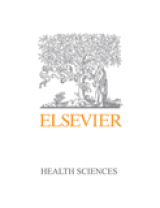Florence Nightingale wrote 'Notes on Nursing' for caregivers in the home and it is remarkable how much of the original remains relevant today. This modern edition aims to complement the work of Florence Nightingale, extending her reach to new generations committed to caring for the people they love. The International Council of Nurses and the Florence Nightingale International Foundation (FNIF) have prepared this modern edition of the Notes 150 years after its original publication, to mark FNIF’s 75th anniversary.
Key Features
- Practical advice on what a caregiver needs to do and know in order to deliver the best care to loved ones, including how to organise the home environment, preparing and serving food, bedding and preventive measures against infection and other complications which put loved ones at risk..
- Clear guidance, with illustrations, lists and planning tools to help caregivers organize and provide an effective program of care.
- Advice for caregivers on how to work with nurses, physicians and other health professionals to ensure their prescriptions and advice are well understood and implemented.
- Advice which anticipates and addresses the needs of all caregivers, whether they live in a modern community or in remote regions with less access to safe water, medications and health professionals.
- Adds new information and advice based on current medical knowledge, while retaining segments of the original work that remain relevant today
- Provides common-sense guidance on good hygiene and organization for caregivers worldwide, whatever their material circumstances
- Endorsed by the IAPO (International Alliance of Patients' Organizations
Author Information
By International Council Nurses and Linda Carrier-Walker
Introduction1. The background to Florence Nightingale’s Notes on NursingThe ‘lady of the lamp’The vocation of Florence NightingaleA systematic approach to providing careChanges in the understanding of disease2. Health of housesNotes on nursing – Florence NightingalePreparing the houseThe bedroomThe bathroomMedical equipmentA home first-aid kit3. Petty managementDeveloping a plan of careAn example of a plan of careWorking with physicians, nurses and other health professionalsKeeping recordsResearching the patient’s illness or conditionMedicationsPreventionExercise and fitnessRehabilitationHelping the patient with respirationTravelling with the patient4. FoodNotes on nursing – Florence NightingaleHelping the patient with eating and drinking5. Bed and BeddingNotes on nursing – Florence NightingaleHelping the patient rest and sleepPressure sores6. Cleanliness Notes on nursing – Florence NightingaleHelping the patient keep their body clean and well groomedHelping the patient with eliminationCleanliness and infections7. Chattering hopes and advicesNotes on nursing – Florence NightingaleFundamental needsHelping the patient with selection of clothing, with dressing and undressingHelping the patient communicate with others to express needs and feelingsHelping the patient with work or productive occupationHelping the patient with recreational activities8. Observation of the sickNotes on nursing – Florence NightingaleMovementNutritionMood and behaviourEliminationSkinChest and abdomenHeadGeneralHow to communicate observations to a physician or nurseWhen to call for helpPlanning for a crisisThe patient who has fallen9. Caring for the carerNotes on nursing – Florence NightingaleThe difficulties of caring and giving careThe health of a care giver: how to manage physical strain and stressDepressionEffective communicationRespite careCaring for a patient who is terminally illThe death of a patientGrieving a loss10. Health literacy for caregiversKnowledge of the laws of healthNotes on nursing – Florence NightingaleSpeaking and listening skillsHealth literacy and health outcomesSources of information for the care giverWhere is the information?The types of support services that may be available in your communityAssistive devicesCare giver support groupsLegal advice
"The content follows that of the 1859 edition, with additional information to include current practices and knowledge. The book provides guidance of a practical nature, intended for use by family members and others who act as caregivers. The language will be accessible to the widest possible readership."International Nursing Review, Volume 56, Number 2. June 2009
'I am finding it a really fascinating read … and it gives some great tips regarding care at home...' Bev Hurst, IAPO Representative for National Concern for Healthcare Infections, UK.




